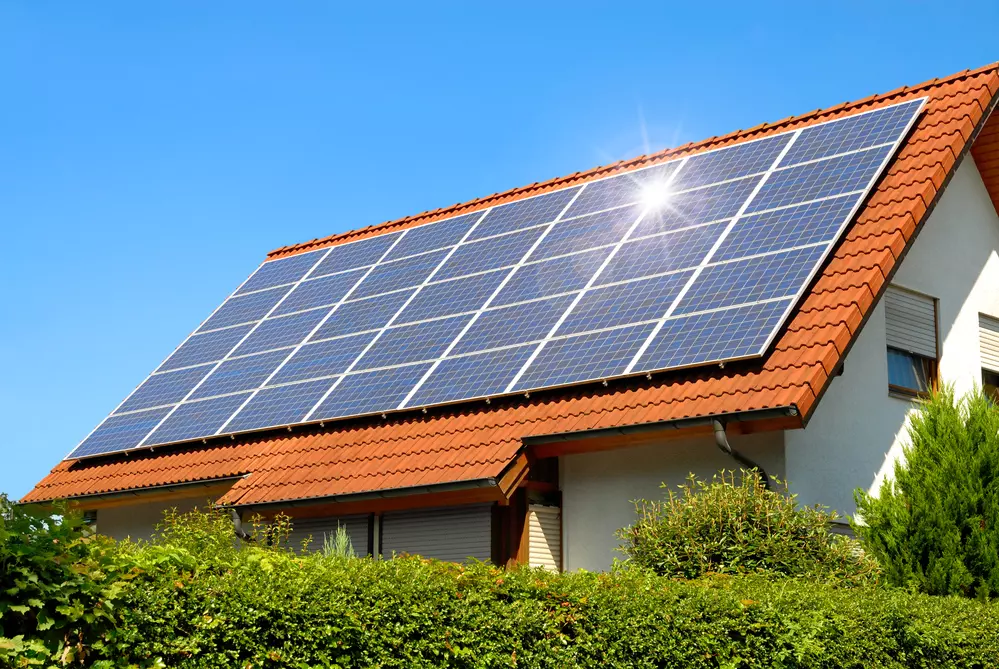54Harnessing Sunlight: Turning Homes into Power Stations
For billions of years, the sun has radiated an almost limitless supply of energy, yet only in recent decades have we learned to harness its potential efficiently. Residential solar panels capture sunlight and convert it into electricity using photovoltaic cells. Unlike fossil fuels—coal, oil, and natural gas—that emit carbon dioxide and other harmful pollutants, solar power is silent, clean, and endlessly renewable.
Every kilowatt-hour of solar energy generated at home represents a direct reduction in greenhouse gas emissions. For a typical household, a well-sized solar panel system can offset several tons of CO₂ annually, equivalent to planting hundreds of trees. From powering daily appliances like refrigerators and washing machines to charging electric vehicles, solar panels transform rooftops into self-sustaining mini power plants.
By making the switch, homeowners are not just reducing their carbon footprint; they are actively participating in the fight against climate change. It’s a personal choice with global impact.
Financial Benefits: Beyond Savings on the Electricity Bill
While environmental benefits are undeniable, the economic case for solar is equally compelling. Once installed, solar panels provide free electricity for 25 years or more, offering decades of reduced reliance on the grid.
Key Financial Advantages Include:
-
Lower monthly energy bills: Homeowners can save significantly depending on system size and sunlight exposure.
-
Incentives and tax credits: Many governments provide rebates, subsidies, and tax deductions to encourage solar adoption.
-
Net metering opportunities: Excess electricity generated can be sold back to the grid, turning rooftops into potential income sources.
-
Increased property value: Homes equipped with solar systems are often more attractive to buyers, reflecting higher resale values.
Financing models have also made solar energy more accessible. Homeowners can choose to purchase systems outright, finance them through low-interest solar loans, or opt for leasing and power purchase agreements (PPAs). Leasing allows families to enjoy immediate energy savings without a hefty upfront investment, while ownership maximizes long-term financial benefits.
The Installation Journey: From Assessment to Activation
Installing solar panels is not a one-size-fits-all process—it’s a tailored journey that ensures optimal performance for each household.
-
Site Evaluation – Solar experts assess roof orientation, angle, shading, and overall energy requirements. Even minor shading can affect efficiency, so precise analysis is critical.
-
System Design – Based on household needs, a custom layout is developed. This includes the number of panels, inverter type, and energy storage considerations if batteries are used.
-
Professional Installation – Panels are mounted securely to withstand weather conditions, connected to inverters, and integrated into the home’s electrical system.
-
Grid Connection & Activation – Once approved by local authorities and utility providers, the system begins generating clean power seamlessly.
Modern installations also incorporate smart monitoring tools, allowing homeowners to track energy production and consumption in real time via apps or dashboards.
Longevity and Maintenance: Protecting Your Solar Investment
One of the biggest advantages of solar panels is their durability. Most systems last 25–30 years with minimal maintenance. Still, a little care ensures maximum efficiency:
-
Cleaning: Removing dust, pollen, or debris from the surface keeps sunlight absorption optimal.
-
Inspections: Annual or bi-annual professional check-ups detect loose wiring or wear and tear early.
-
Monitoring systems: Digital platforms alert homeowners to drops in efficiency, ensuring timely intervention.
Manufacturers often back panels with warranties covering two decades or more, offering peace of mind that the investment is protected.
Community and Global Impact
The power of solar extends beyond individual households. When entire neighborhoods adopt solar technology, the collective reduction in demand for fossil fuel energy creates a ripple effect—lowering air pollution, reducing strain on the grid, and inspiring broader adoption.
Communities that embrace renewable energy become leaders in sustainability, setting examples for others and contributing to global climate goals. In the long run, widespread solar adoption can reshape how nations approach energy security and resilience, especially during natural disasters or energy crises.
The Future of Solar: Smarter, Cheaper, and More Efficient
Technological innovation continues to accelerate the solar revolution:
-
Next-generation panels with higher efficiency and lighter materials are emerging.
-
Solar-plus-storage systems make it possible to use solar energy at night or during power outages.
-
Smart grids are being developed to optimize energy distribution and integrate renewables seamlessly.
-
Decreasing costs are making solar more affordable than ever, turning it into one of the most cost-effective energy sources globally.
As these advancements unfold, the barriers of today—such as high battery prices or limited efficiency—will diminish, making solar panels an even more attractive option for households everywhere.
Conclusion: A Bright Path Ahead
Installing solar panels at home is more than a lifestyle choice—it is an investment in the future. By reducing reliance on fossil fuels, cutting energy bills, and supporting global sustainability goals, solar energy offers both immediate and long-term rewards.
For homeowners, the decision to go solar is not just about powering lights or appliances—it’s about embracing independence, contributing to environmental stewardship, and preparing for a cleaner tomorrow. As costs continue to fall and technology evolves, solar panels will become a defining feature of modern homes worldwide.
By turning rooftops into renewable energy hubs, we are not just lighting our homes—we are lighting the path toward a greener, smarter, and more sustainable future.

